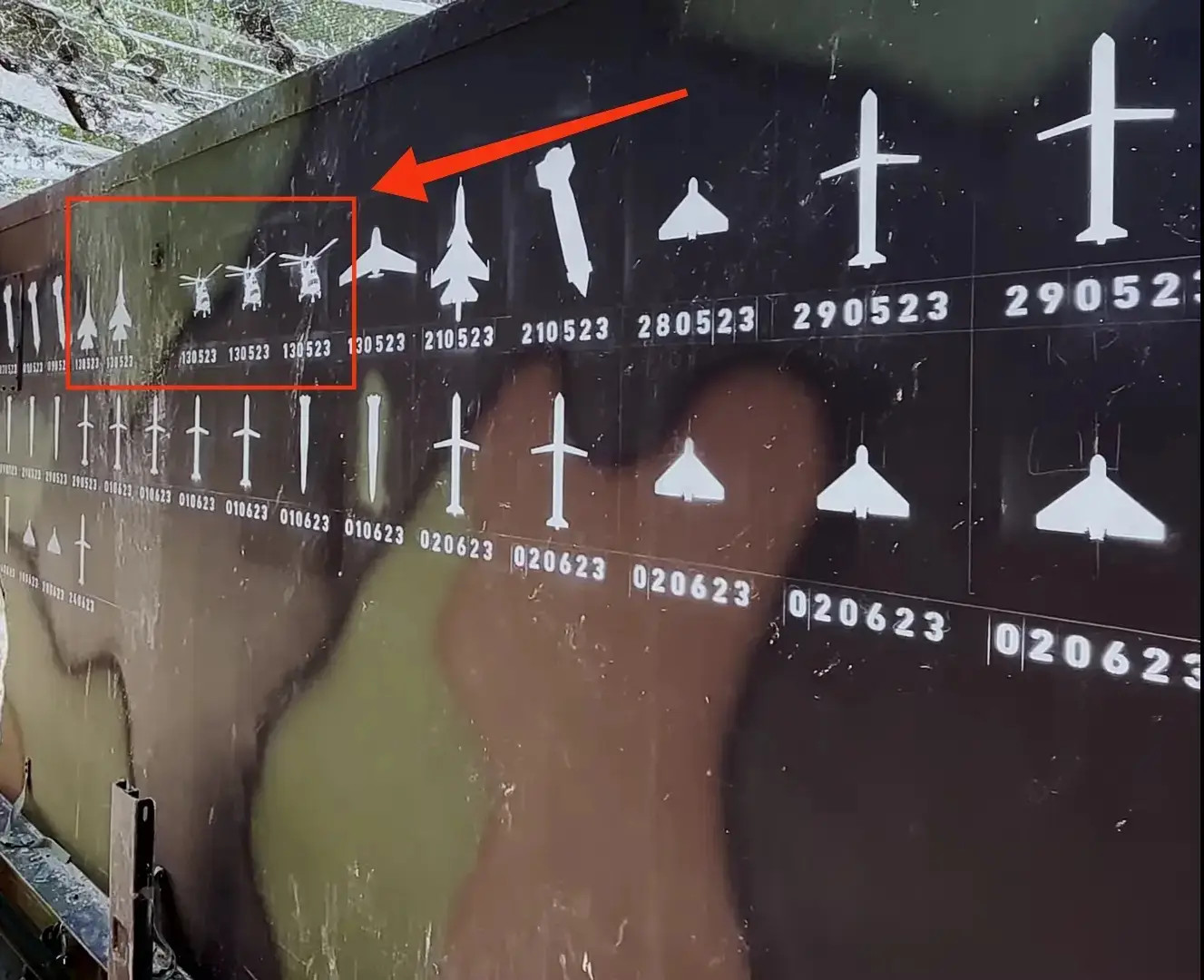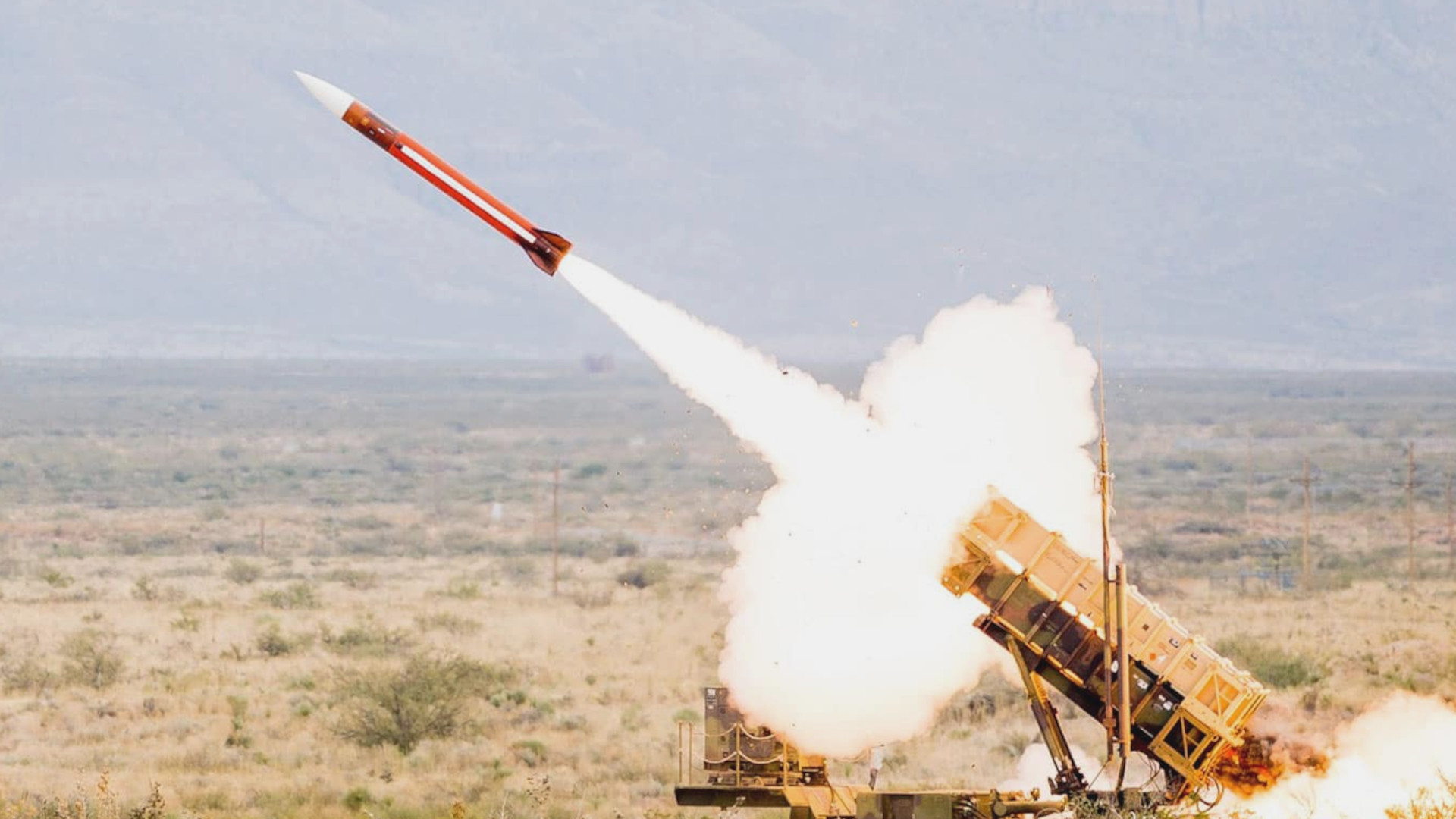A single Saudi Arabian Patriot surface-to-air missile battery shot down six ballistic missiles, which Iranian-backed Houthi militants in Yemen had fired, in the space of just under 50 seconds during an incident in 2019, according to official details shared at a defense trade show.
The incident again highlights concerns about the inadequacy of the U.S. Army’s current Patriot force and its general ground-based air and missile defense capacity. It also speaks to the serious challenges defenders already face, in general, on land and at sea, when responding to higher-volume missile strikes, as has been recently underscored by Houthi attacks on ships in and around the Red Sea.

Royal Saudi Air Force (RSAF) officials recently shared the details about the incident in 2019 at the World Defense Show, which opened yesterday in the Saudi capital Riyadh, according to a report from Aviation Week. The RSAF’s 290th Patriot Unit was responsible for intercepting the Houthi ballistic missiles, which had been launched at the Saudi city of Jazan (also written Jizan).
“In an engagement which has now become legendary within the service, according to officials, battery commanders launched an undisclosed number of Patriots to intercept the incoming missiles, with one missile being launched every six seconds,” Aviation Week reported. What specific types of Patriot interceptors were employed is unclear. Saudi Arabia has acquired a mix of PAC-2 and PAC-3 variants over the years, the differences between which you can read more about here.
The exact composition of the RSAF’s 290th Patriot Unit at the time of the incident is also unknown. A typical U.S. Army Patriot battery today can have up to eight trailer-mounted launchers along with an AN/MPQ-65 multifunction phased array radar and requisite fire control, communications, and other support equipment. Different versions of the trailer-based launchers can be loaded with up to four PAC-2-series, 16 PAC-3 CRI, or 12 PAC-3 MSE interceptors, or a mix thereof.

Aviation Week’s story also does not say when in 2019 the shootdowns occurred. However, the Houthis claimed to have fired 10 Badr-1s at the main airport in Jazan on August 25 of that year and Saudi authorities later said at least six had been intercepted.
It is worth noting that the Houthi’s 210mm-diameter Badr-1 is most typically described as a heavy artillery rocket, but the definitional line between weapons in that category and very short-range ballistic missiles is often blurry. The Yemeni militants also publicly announced the introduction of a guided version of the Badr-1, known as the Badr-1P, with a claimed maximum range of 93 miles (150 kilometers) in 2018, which further muddies these waters. The U.S. Air Force notably included two Chinese-made guided 122mm artillery rockets (the WS-22 and BRE7) with shorter stated maximum ranges than the Badr-1P as examples of so-called close-range ballistic missiles (CRBM) in a 2021 unclassified report on global ballistic and cruise missile developments. The U.S. military uses the term CRBM to refer to short-range ballistic missiles (SRBM) with ranges under 186 miles (300 kilometers).

Though it is unclear what type of Badr-1s the Houthis employed in the August 2019 attack on Jazan, ballistic threats in general pose unique challenges to defenders given the high speeds at which they typically fall on their targets compared to air-breathing threats.
The Houthis had targeted Jazan, which is in the far southwestern end of the country near the border with Yemen, before this and continued to do so afterward. The Yemeni militants also routinely targeted other Saudi cities, including Riyadh, with larger ballistic missiles, as well as cruise missiles and drones, for years. The Houthis notably claimed responsibility for an unprecedented drone and missile attack on Saudi oil infrastructure in September 2019. Overall, fighting between the Saudis (and their coalition in Yemen) and the Houthis has significantly slowed in recent years as Riyadh has pushed to extricate itself from the conflict, which has been grinding along for nearly a decade.
Regardless, the additional details about how Saudi Patriots responded to the 2019 attack show the level of strain that a larger number of even lower-end ballistic missiles can place on friendly air and missile defenses. As is the case in the U.S. military and many other armed forces around the world, the standard operating procedure for RSAF Patriot batteries is reportedly to fire at least two missiles at each incoming threat. So if six Houthi missiles were downed in 2019, the Saudis likely fired at least 12 Patriots.
The current cost of a single PAC-3 MSE missile, the most advanced interceptor for the Patriot system currently, is nearly $5.3 million, according to U.S. Army budget documents. The pricepoint for older PAC-3 version and PAC-2 types is lower, but still millions of dollars per-missile.

If the incident recounted at the World Defense Show was the attack on August 25, 2019, attack on Jizan airport, as seems likely, the Houthis also said they launched 10 Badr-1s in total. This raises the distinct possibility that the RSAF fired even more Patriot missiles in this instance. It also shows the real threat air and missile defenses face of being overwhelmed, even by lower-tier threats.
After the August 2019 attack on Jazan, Saudi authorities said dozens were killed and wounded as a result of the attack despite the interceptions. This, in turn, shows the potential costs to personnel and materiel that can be incurred by not shooting down such threats, whatever price differential there might be between the interceptors and what they hit.
All of this is certainly in line with what Raytheon, Patriot’s manufacturer, has said previously, in that “Arab” operators had used these systems to shoot down more than 100 “tactical” ballistic missiles just between 2015 and 2017. More recently, multiple reports between December 2021 and January 2022 warned that the Saudis were at risk of running out of Patriot interceptors within “months” due to the sheer volume of Houthi attacks involving ballistic missiles, as well as cruise missiles and drones.
The War Zone has highlighted the challenges this reality poses in the context of the U.S. Army’s finite Patriot force in the past. Last year, the service deployed two full Patriot battalions to the Middle East in response to the still-expanding crisis across the region. Those units represented around 13 percent of its total deployable Patriot battalions and around 20 percent of the ones not already positioned elsewhere around the world.

The Army is looking to expand its Patriot force, but currently only has funding for one additional battalion. At the same time, the situation in the Middle East, as well as the conflict in Ukraine, have already generated a surge in global demand for Patriot systems and interceptors, specifically, which looks set to create backlogs in production. For Ukraine, in particular, Patriot has become a critical line of defense against Russian ballistic missiles, including ones that the country is now sourcing from North Korea. Ukrainian Patriots are also being used to very good effect against cruise missiles, drones, and crewed aircraft and helicopters.

These issues go well beyond Patriot and intercepting ballistic missiles on land, too. The Houthis’ anti-ship campaign in and around the Red Sea has now brought the very real threat posed by anti-ship ballistic missiles fully into the spotlight. The group has also been layering those weapons together with cruise missiles and drones during attacks, underscoring the complexities that defenders at sea, as well as on land, will only increasingly face as time goes on. The War Zone just recently used the case of the total number of vertical launch system cells and other armament on the U.S. Navy’s future Constellation class frigates to lay out in detail how these challenges are already impacting naval forces.
Altogether, a Saudi Arabian Patriot battery downing six Houthi ballistic missiles within a minute is certainly a significant feat. At the same time, it also points to very serious air and missile defense challenges and concerns that Saudi forces, as well as others around the world, are facing right now and that are only likely to grow in the future.
Contact the author: joe@twz.com
